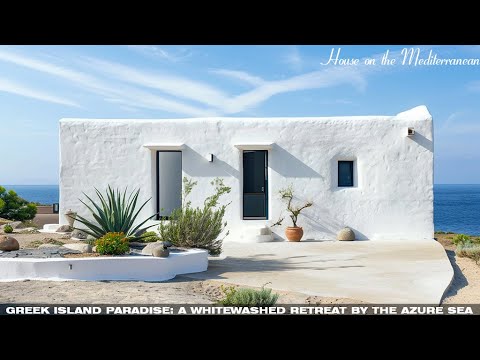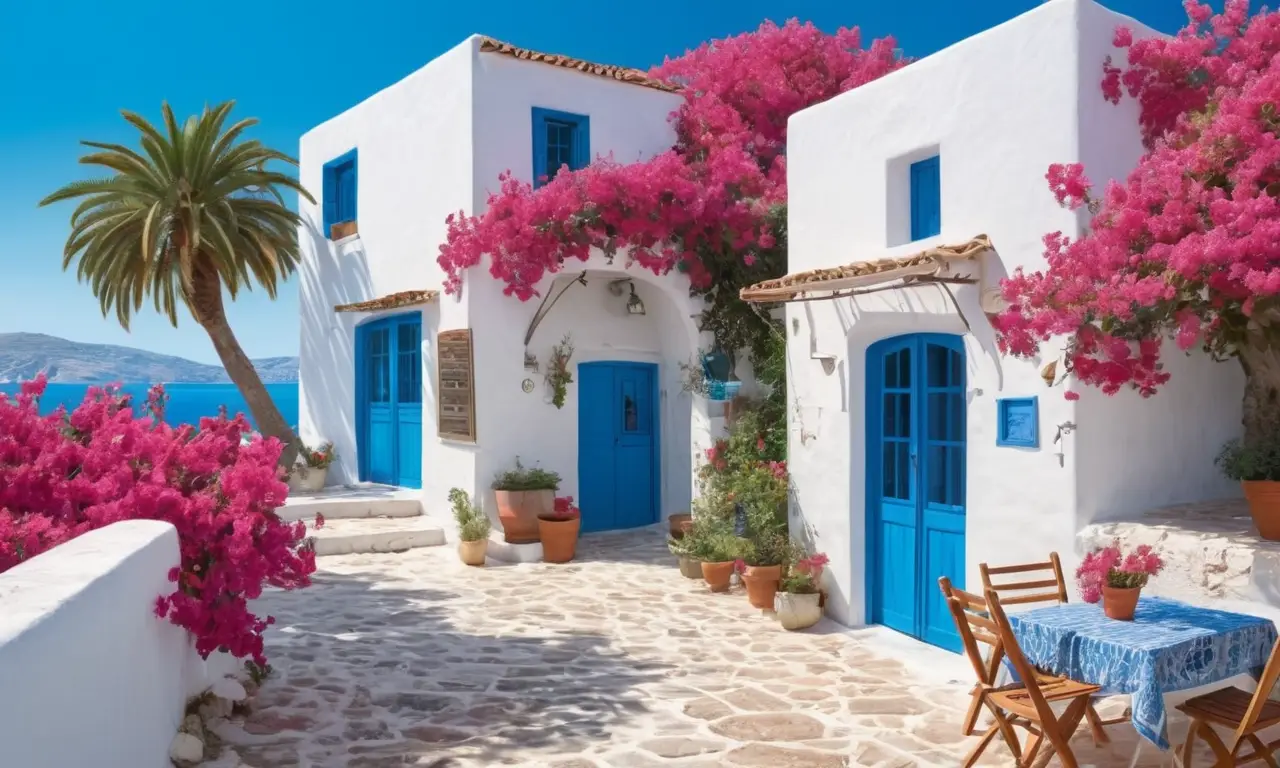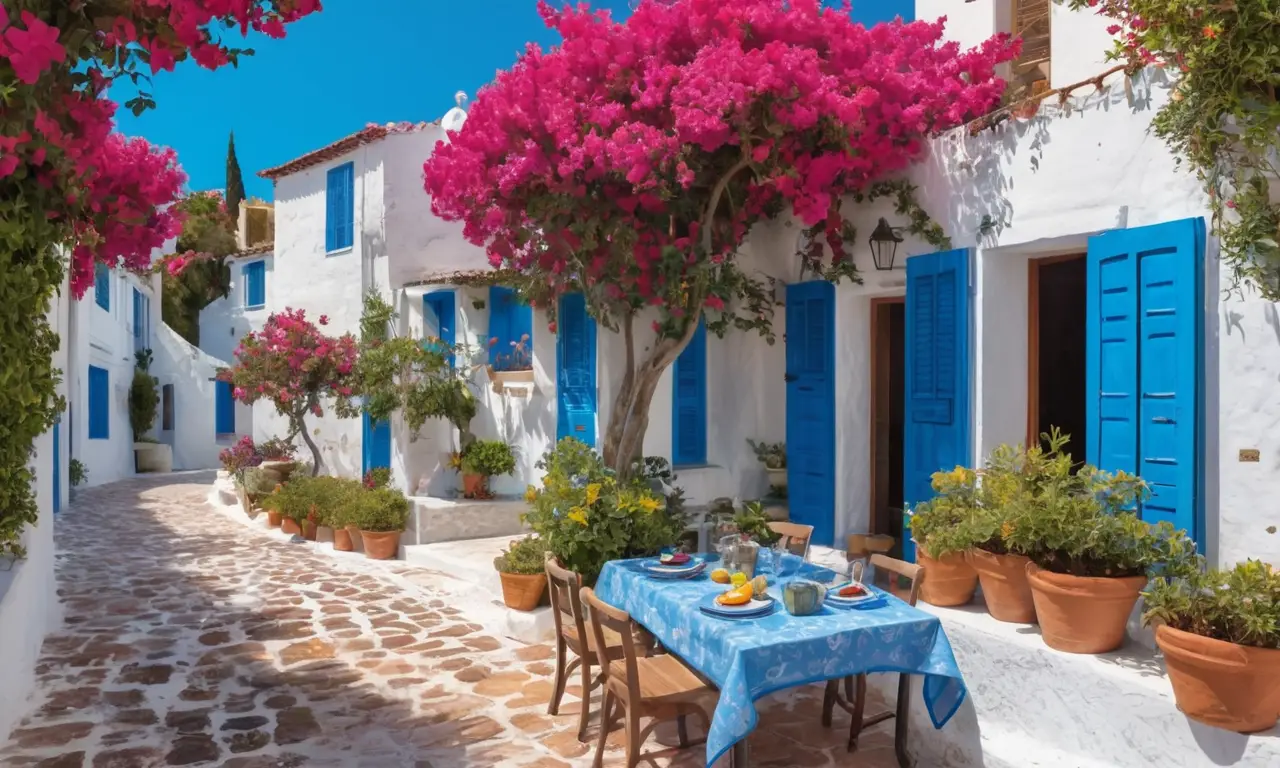
The sun-drenched landscapes of Greece are renowned for their captivating beauty, but few sights capture the essence of this Mediterranean paradise quite like its iconic white buildings. These pristine structures, often adorned with vibrant blue accents, create a breathtakingly beautiful tapestry across picturesque villages and coastal towns. From the windswept Cycladic islands to the historic heart of Athens, these architectural gems beckon travelers seeking an escape into a world of timeless charm.
This article delves into the allure of white buildings in Greece, exploring their history, architectural styles, and the cultural significance they hold. We’ll journey through the enchanting Cycladic islands, renowned for their stunning white architecture, and discover how blue accents add a touch of Mediterranean magic. We’ll also explore Athens, where ancient ruins seamlessly blend with modern white buildings, showcasing the enduring legacy of Greek architectural tradition.
Whitewashed Buildings in Greece
The prevalence of white buildings in Greece is deeply rooted in both practical and aesthetic considerations. The whitewash, traditionally made from lime plaster, served a practical purpose in the hot Mediterranean climate. It reflected sunlight, keeping interiors cooler and reducing heat absorption. This practice originated centuries ago, becoming an integral part of Greek architectural tradition.
Beyond their practicality, white buildings in Greece possess an undeniable aesthetic appeal. Their pristine surfaces create a sense of serenity and purity, harmonizing with the azure skies and sparkling Aegean Sea. The stark white backdrop provides a canvas for vibrant bougainvillea blossoms, blooming geraniums, and splashes of blue accents, further enhancing their visual impact.
The use of white buildings in Greece extends beyond residential structures. Churches, monasteries, and public buildings often feature this iconic style, contributing to the cohesive architectural landscape. The whitewash becomes a unifying element, creating a sense of continuity and shared heritage across diverse building types.
Cycladic Islands Architecture

The Cycladic islands, an archipelago in the Aegean Sea, are renowned for their breathtakingly beautiful white buildings. These islands, including Mykonos, Santorini, and Paros, boast a distinct architectural style characterized by whitewashed houses with flat roofs, blue-domed churches, and narrow winding streets.
The Cycladic architecture is deeply influenced by the island’s harsh environment. The use of whitewash not only provided protection from the sun but also helped to blend buildings into the landscape, minimizing their visual impact on the surrounding terrain. The iconic blue domes, often seen adorning churches, add a vibrant contrast against the white backdrop, symbolizing the heavens and creating a sense of spiritual elevation.
Blue Accents and Mediterranean Charm
Blue accents play a crucial role in enhancing the aesthetic appeal of white buildings in Greece. The vibrant blue hues, reminiscent of the Aegean Sea and clear skies, create a captivating contrast against the pristine white surfaces. These blue accents are often incorporated into window frames, doors, shutters, and decorative elements, adding a touch of Mediterranean charm to the architecture.
The use of blue is not merely aesthetic; it holds cultural significance as well. In Greek tradition, blue represents serenity, peace, and the divine. The incorporation of blue accents in white buildings reflects this cultural reverence for these qualities, imbuing the structures with a sense of tranquility and spiritual connection.
Picturesque Villages and Coastal Towns

The idyllic villages and coastal towns scattered across Greece are adorned with white buildings, creating postcard-perfect scenes. These charming settlements offer a glimpse into traditional Greek life, where narrow cobblestone streets wind through whitewashed houses, leading to picturesque squares and bustling harbors.
From the sun-drenched shores of Mykonos to the volcanic cliffs of Santorini, each village boasts its unique character and charm. The white buildings provide a backdrop for vibrant local markets, quaint cafes, and traditional tavernas, inviting visitors to immerse themselves in the authentic Greek experience.
Athens’ Blend of Ancient and Modern
Athens, the capital city of Greece, seamlessly blends ancient history with modern architecture. While iconic landmarks like the Acropolis stand as testaments to Greece’s rich past, the city also boasts a vibrant contemporary scene. Within this urban landscape, white buildings play a significant role, adding a touch of Mediterranean elegance to the cityscape.
Modern apartment buildings and office complexes often incorporate white facades, reflecting the city’s commitment to clean lines and minimalist aesthetics. This juxtaposition of ancient ruins and modern white buildings creates a unique architectural tapestry, showcasing Athens’ ability to embrace both its heritage and contemporary aspirations.
Conclusion
The iconic white buildings in Greece are more than just structures; they represent a cultural legacy, an aesthetic ideal, and a symbol of Mediterranean charm. From the sun-drenched Cycladic islands to the bustling streets of Athens, these pristine structures create a captivating visual landscape that draws travelers from around the world. Their enduring appeal lies in their ability to evoke a sense of serenity, beauty, and timeless elegance, making them an integral part of Greece’s allure.
